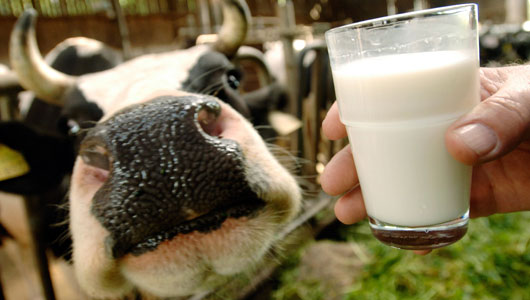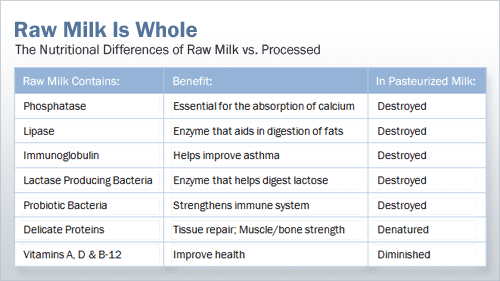 Frito-Lay, Oscar Meyer, Cargill, Kellog, Pepsi Cola, Purina and Tyson are some of the leading producers of the American daily diet. For tens of millions, a bowl of Capn Crunch and a glass of Sunny Delite for breakfast, McDonalds for lunch and Totino’s Pizza for dinner is the norm. Yet the irony is that many people consider raw milk, farm raised unrefrigerated eggs and organic grown vegetables not approved or regulated by the FDA to be risky. We have become a society that balances a Big Mac and a large Coke with a Walmart salad. A Sara Lee Pie is the whiskey and Slimfast an aspirin for the hangover.
Frito-Lay, Oscar Meyer, Cargill, Kellog, Pepsi Cola, Purina and Tyson are some of the leading producers of the American daily diet. For tens of millions, a bowl of Capn Crunch and a glass of Sunny Delite for breakfast, McDonalds for lunch and Totino’s Pizza for dinner is the norm. Yet the irony is that many people consider raw milk, farm raised unrefrigerated eggs and organic grown vegetables not approved or regulated by the FDA to be risky. We have become a society that balances a Big Mac and a large Coke with a Walmart salad. A Sara Lee Pie is the whiskey and Slimfast an aspirin for the hangover.
Here are a couple of interesting bits of information as provided by the FDA, USDA and other health food related groups regarding GMOs (genetically modified organisms) and genetically engineered foods-
88% of US grown corn is genetically modified, and the US is the world’s largest producer of corn. That number climbs to 93% for soy beans and 95% for sugar beets, of which over half of our sugar is derived from.
BMJ Journels did a study in 2016 noting that nearly 60% of our daily food consumption is from processed products.
The FDA itself doesn’t test or verify whether genetically engineered foods are safe. However, in 2014, the director of the FDA, Michael Landa testified before the US House of Representatives that the agency was “confident that the GE foods in the U.S. marketplace today are as safe as their conventional counterparts.”
In You

When it comes to increasing the shelf life of a product, wouldn’t it seem reasonable to believe the big time producers do it by replacing organic ingredients with artificials resistant to age or bacteria? If a product won’t break down sitting on a shelf for extended periods of time, what happens when it sits in your gut? Diverticulitis, Cronh’s disease and other digestive disorders have been increasing ever since the market was flooded with genetically modified foods. Two notorious examples are corn and soy, which are the most common ingredients of conventional and processed foods in supermarkets. Our immune systems are affected by processed foods as it alters the balance and level of bacteria in our bodies. Trailing along the wagons of the diet industry are the increasing interests in detoxification products designed to flush your system of the non digestible sludge that settles in your intestinal tract, and probiotics to replace what GMOs have killed off. Understand that this may not stop with you; the condition can be passed to your children. It may sound simplistic, but removing the natural fat from foods tends to remove the flavor, and companies compensate for that with sugar. The fat from a piece of grass fed beef is not the same as the fat in a box of Oreos.Low calorie or diet substitutes are typically no more healthier as they don’t offer the vitamins or nutrients of the organic original, and removing the sugar is no benefit when you are replacing it with a synthetic additive.
As another example, around 1960, scientists started tampering with the genes in wheat to increase the yield. Today’s wheat is not your grandmother’s wheat. It is less nutritious and has some properties that make it much worse for people who are intolerant to gluten. Research has shown that modern wheat may cause inflammation and increased cholesterol levels, at least when compared to older varieties.
 Piggly Wiggly was the Adam of the modern day grocery stores back in 1916, and by the 40s supermarket chains were exploding. The convenience of ready made meals from the original Hamburger Helper to today’s in store delicatessins with thousands of meals on the go have helped reduce gardens from a necessity for many to little more than cosmetic, with a typical backyard sprouting a few hybrid tomato plant annuals. It begs the question-what is the health and lifespan of a community that can feed itself vs one that cannot?
Piggly Wiggly was the Adam of the modern day grocery stores back in 1916, and by the 40s supermarket chains were exploding. The convenience of ready made meals from the original Hamburger Helper to today’s in store delicatessins with thousands of meals on the go have helped reduce gardens from a necessity for many to little more than cosmetic, with a typical backyard sprouting a few hybrid tomato plant annuals. It begs the question-what is the health and lifespan of a community that can feed itself vs one that cannot?
With the rise in homesteading and urban/suburban farming there is a growing awareness with our food, whether fresh, boxed, canned or frozen, you can no longer judge the book by its cover.
While I’m not anti big biz and I do understand the requirements to feed a booming and mobile society, the primary goals of corporate food producers are volume and market share while the primary goals of a small scale farmer or homesteader are quality and nutrition. No matter how a chain store strawberry is marketed, price isn’t the only difference between it and it’s organic cousin. Government is specific which fruits and vegetables can be labeled USDA organic certified and which cannot. Regardless how much you wash some produce those chemical preservatives and pesticides won’t come off. Read that sentence back again.
In Your Livestock
Genetically Modified Organisms or GMOs
The USDA states on their website that “the use of genetic engineering, or genetically modified organisms (GMOs), is prohibited in organic products. This means an organic farmer can’t plant GMO seeds, an organic cow can’t eat GMO alfalfa or corn.” It is somewhat alarming to know that the federal government has not mandated that genetically modified organisms be proved safe before they’re used in your food

The US is the world’s largest producer of corn. Feed purchased for chickens, rabbits, dairy cows, beef cattle, pigs, sheep, goats, and fish contain corn. With no current clear labeling requirements GMOs are tucked away in our cupboards and freezers and barns, consumed by us as well as the animals that produce our milk, our meat and our eggs. You may think your livestock are freerangers, grass fed and chemical free, but if you are supplementing their diet from outside sources, that is most likely not the case.
Most cows in confinement pens have been bred to produce three times as much milk as the old-fashioned cow. The old school farm cow was allowed to go dry during winter months. The more milk a confinement dairy cow produces, the more diluted its vitamin content becomes. Genetic selection in cows for increased milk production has caused the need for special feed, supplements, and an increasing number of vaccines and visits by the vet. The average life span of the modern factory cow is 3.5 years and her milk can contain high levels of pituitary growth hormone. Link (Raising Healthy Dairy Cows edited by Sandra Redemske. Raw Milk Resource Guide, 2003).
By comparison a typical grass fed free range farm cow can expect to live somewhere around a dozen years and give a pure, natural and unfiltered product. Whether thru misinformation or ignorance, the idea is disturbing to many, yet drinking a thin, watery and artificially enhanced version is not. 
The evolution of technology and science in farming and agriculture has made remarkable strides yet it still seems at times dysfunctional next to health and nutrition. Read the ingredients on your next grocery shopping trip; see what is there as well as what isn’t. If there are ingredients that you cannot pronounce or do not sound like foods, it probably isnt. Those labels are the most important source to help consumers make better decisions for their families and their farms. Look for the alternatives. Not every discovery is an advance; not every advance is properly tested.
The Demographics of the American Food Gardener















